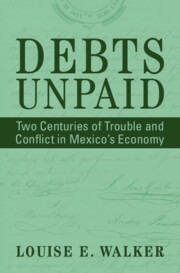Book contents
References
Published online by Cambridge University Press: 04 November 2025
Information
- Type
- Chapter
- Information
- Debts UnpaidTwo Centuries of Trouble and Conflict in Mexico's Economy, pp. 275 - 296Publisher: Cambridge University PressPrint publication year: 2025
